Niamey is the capital of Niger. With its bustling markets, landmarks, and vibrant street scenes, it plays a pivotal role in the nation’s affairs.
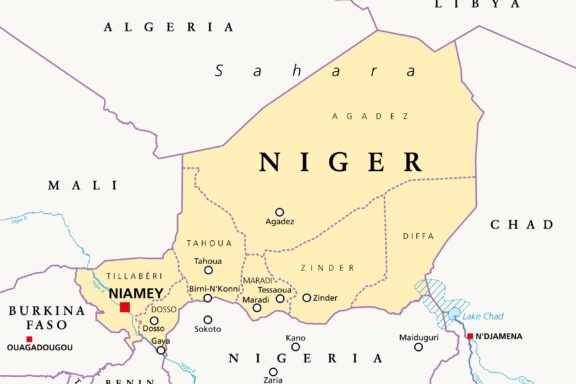
Niamey serves as the administrative, cultural, and economic center of Niger. The city is home to several universities, museums, and other institutions, contributing to its status as the heart of Niger’s civic life.
Where is Niamey?
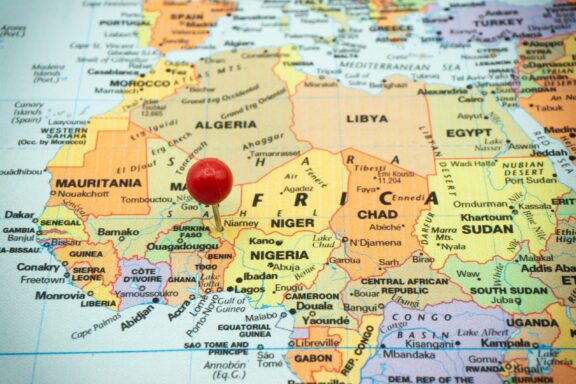
Niamey’s geographical coordinates are approximately 13.5 °N latitude and 2.1 °E longitude. This places it within the Sahelian region, which spans Africa and where some of the hottest countries in the world are located.
The city is positioned strategically along the Niger River, one of West Africa’s major waterways. This river meanders through the city, providing a natural boundary and shaping its layout. Its location near the border with Burkina Faso makes it a gateway between Niger and its western neighbor.
History of Niamey
Before the influence of different empires and later European colonizers, the vicinity of Niamey saw humble beginnings. The Niger River’s banks provided fertile grounds for the Maouri, Zarma, and Songhai communities.
Engaging primarily in fishing and farming, these groups also participated in regional trade, laying the foundation for Niamey’s later significance as a trade hub.
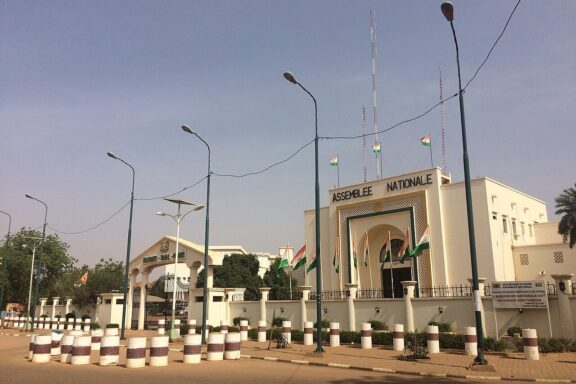
During the late 19th century, as European powers gazed towards Africa, Niamey was on the cusp of dramatic change. After various expeditions and encounters, French forces established dominance over the region, incorporating it into the vast territory of French West Africa.
By 1926, recognizing its strategic location on the Niger River – a lifeline for transportation and communication – the French shifted the capital of Niger from Zinder to Niamey. With its new status, the city began to undergo infrastructural and administrative transformations.
As the winds of change swept across Africa in the 20th century calls for independence resonated. Niamey, the political and administrative heart of Niger, was at the forefront of these movements.
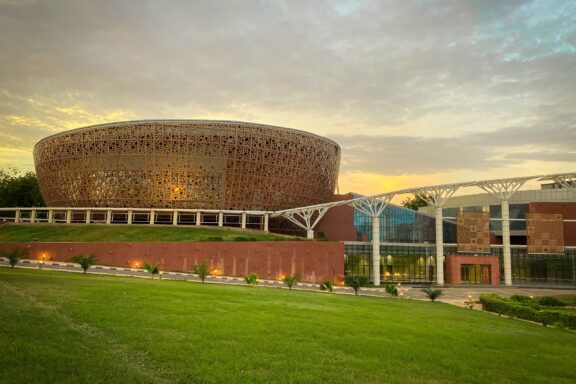
On August 3, 1960, these efforts culminated in Niger gaining independence from French colonial rule, with Niamey continuing its role as the capital.
Since then, the city has witnessed various political changes, economic shifts, and cultural transformations, solidifying its position as an essential hub in West African affairs.
Features of Niamey
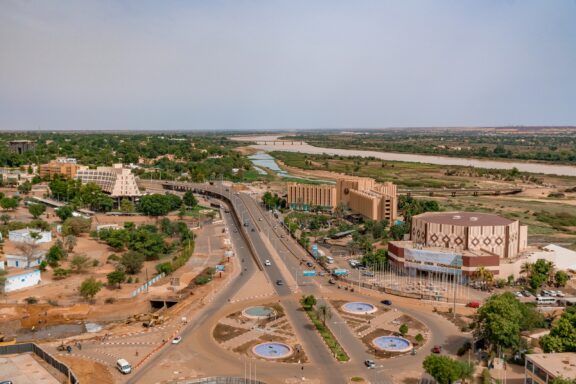
Niamey is a city teeming with life and cultural dynamism. One of the city’s most distinguishable features is the Niger River, which not only lends a scenic beauty but also plays a crucial role in shaping the residents’ daily lives, from fishing activities to river-side markets and recreational areas.
The city’s architecture is a fascinating blend of traditional Sahelian styles and modern structures. Old colonial buildings, remnants of the French colonial era, coexist with contemporary high-rises, showcasing Niamey’s evolution.
Geography and Climate
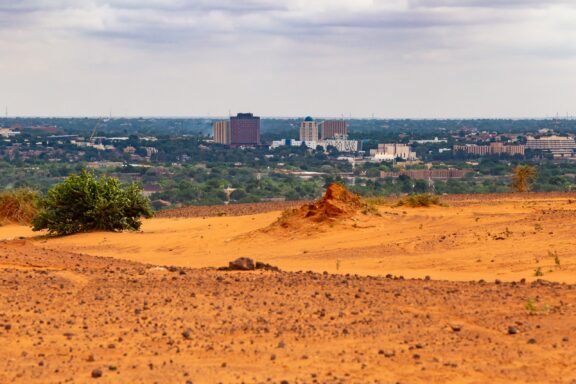
Nestled within the Sahelian region, Niamey is characterized by a semi-arid landscape. While the Niger River irrigates parts of the city, much of the surrounding area consists of sparse vegetation adapted to the dry conditions.
This Sahelian geography transitions from the vast Sahara Desert to the north to the more verdant savannas in the south. The climate is tropical, with a marked wet and dry season. The rainy season typically spans June to September, bringing brief, intense downpours.
For the rest of the year, Niamey experiences the dry harmattan winds blowing from the Sahara, making the climate hot and dusty.
Population
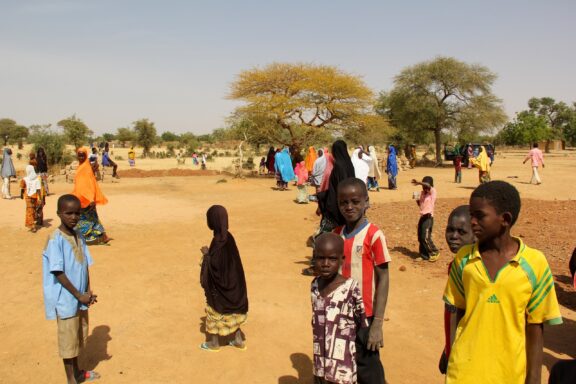
Niamey is the political heart of Niger and its most populous city. With a steadily growing population, the city has become a melting pot of various ethnic groups.
The Zarma and Songhai people predominantly form the majority, but the city also hosts many other ethnicities, including Hausa, Fulani, and Tuareg.
Multiple languages can be heard in its bustling streets, though French is the official language, and Zarma is also widely spoken. The city’s population is predominantly Muslim, with smaller Christian and indigenous religious communities.
Economy
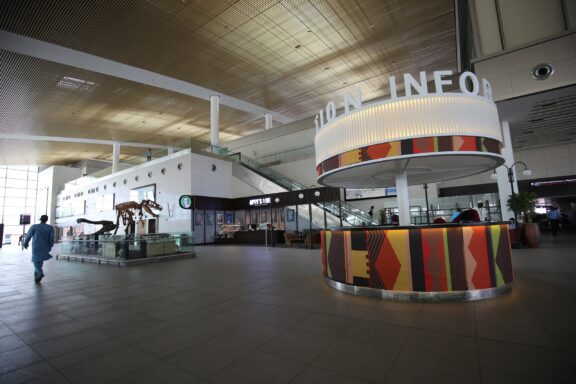
Niamey’s economy is a mix of traditional and modern sectors. The Niger River has always been central to the city’s economic activities, supporting fishing and agriculture.
Large markets, like the Grand Marché and smaller local ones, are vital for commerce, where one can find everything from local crafts to imported goods.
In recent years, there has been an increase in modern economic activities, including banking, telecommunications, and services. As the capital city, Niamey houses different government institutions, international organizations, and embassies, contributing to its economic health.
The city is also slowly becoming a hub for regional trade and has seen investments in infrastructure to bolster its role in the broader West African economy.
Things to Do and Places to See in Niamey
Niamey offers an array of captivating activities and sights. Delve into some of the most renowned landmarks and attractions that the city boasts.
1. National Museum of Niger (Musée National du Niger)
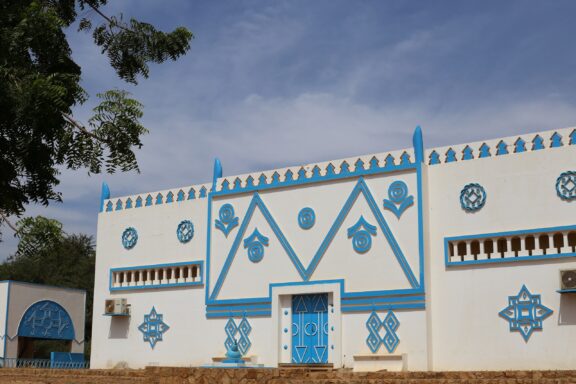
The National Museum of Niger is more than just a repository of artifacts; it has a dual role as an educational center and a tourist attraction, offering an unparalleled look into the rich tapestry of Niger’s past and present.
The museum provides a multi-layered experience. Here, you can engage with hands-on exhibits or attend workshops to immerse you in local crafts and traditions. The museum’s vast scope ensures that visitors of all interests will find something to captivate their curiosity.
2. Niger River Tour
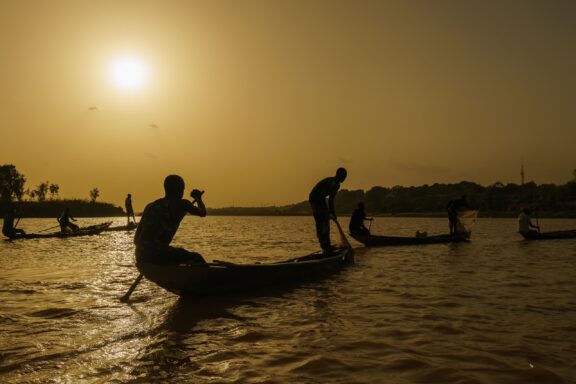
The Niger River tours offered in Niamey allow visitors to engage deeply with this essential waterway. These tours take you on a journey that’s both scenic and informative.
You’ll traverse river sections on boats equipped with all the amenities for a comfortable voyage, including knowledgeable guides who can elucidate the river’s ecological significance.
3. Grand Marché
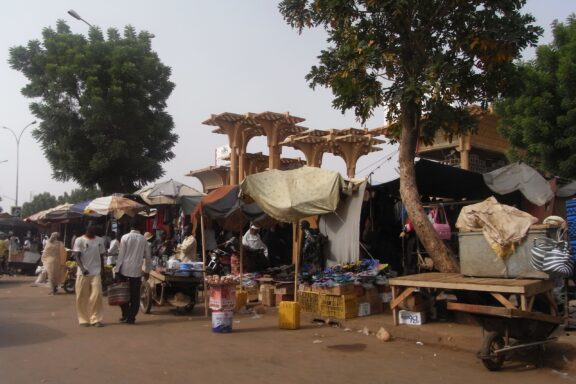
The Grand Marché in Niamey is the beating heart of the city’s commercial and social life. With its labyrinthine layout and myriad offerings, it exemplifies the bustling energy of Niger’s capital.
Covering several blocks, the market features an array of stalls selling everything from textiles and spices to electronics and household items. The market is divided into various sections, each specializing in particular goods, creating a streamlined shopping experience.
4. Niamey Grand Mosque
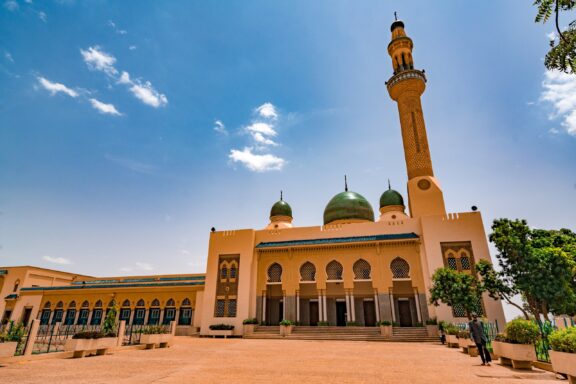
Standing as an emblem of religious diversity and architectural splendor, the Niamey Grand Mosque is a focal point of spiritual life in the capital city. The mosque features an expansive courtyard, a large prayer hall, and a towering minaret punctuating Niamey’s skyline.
The intricate detailing and robust construction attest to its status as a significant religious landmark open to visitors of all faiths. Tourists can climb the minaret for a panoramic view of the city or wander the premises to take in the mosque’s architectural grandeur.
5. Mosquée Cité Caisse
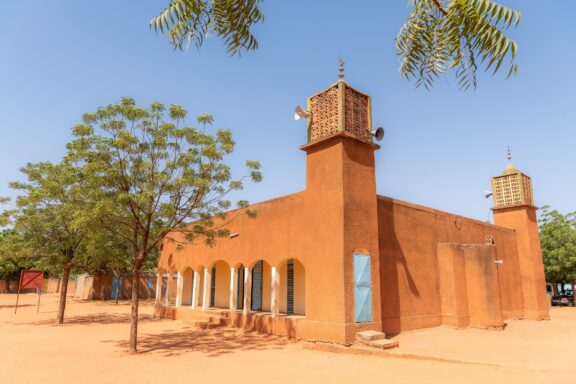
Mosquée Cité Caisse is a community anchor that serves as a meeting point for religious and social gatherings. Unlike many other mosques, Mosquée Cité Caisse incorporates contemporary architectural elements while retaining traditional Islamic design motifs, offering a blend of old and new.
While the mosque is an active religious site, it welcomes tourists interested in Islamic culture. The serene atmosphere is ideal for those seeking a quiet moment amidst the hustle and bustle of Niamey.
6. Explore the Traditional Mud Houses in Nearby Villages
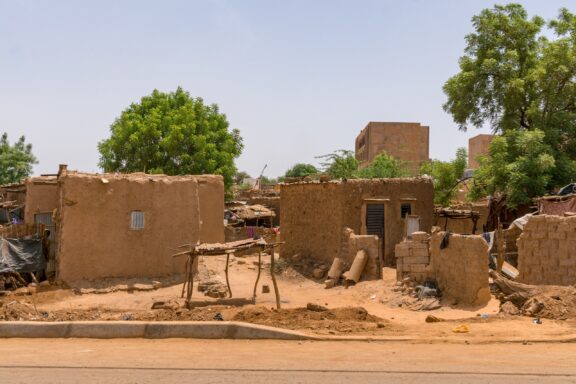
Situated on the outskirts of Niamey, these villages offer a stark yet beautiful contrast to the city’s urban landscape. The traditional mud houses serve as living testimonials to Niger’s rural culture.
The mud houses are constructed using time-honored techniques passed down through generations. Made primarily of earth and straw, they are energy-efficient and eco-friendly.
Visiting these villages offers a unique opportunity to engage with rural Nigerien life and learn about the construction methods, experience the hospitality of the villagers
Frequently Asked Questions
Is Niamey safe for tourists?
Safety concerns exist in Niamey due to high crime levels, including thefts, robberies, and break-ins. Additionally, there’s a significant threat of kidnapping from terrorist groups, even in the capital.
How to get around Niamey?
Taxis and rented vehicles are the common modes of transportation. Public transportation exists but might not be as reliable.
What kind of food can I expect in Niamey?
The traditional cuisine of Niamey has its roots in the rich tapestry of ethnic groups that inhabit the region, primarily the Zarma and Songhai communities.
Influenced by the Niger River’s bounty and the Sahelian environment, the cuisine combines locally sourced ingredients like millet, rice, and fish.
What are must-try dishes in Niamey?
In the heart of Niamey, the culinary landscape is a blend of tradition and flavor. For those keen to savor the authentic taste of the city, here are the top 4 dishes you must try:
1. Sauce D’arachide: A savory peanut sauce often served with rice or millet.
2. Boulettes de Poisson: Fish balls made from fresh fish from the Niger River, seasoned and fried to perfection.
3. Tô: A staple dish made from millet or sorghum flour, usually accompanied by a vegetable or meat sauce.
4. Brik: A thin pastry filled with tuna or egg and then deep-fried, showcasing the influence of trade and neighboring cuisines.
Where to buy souvenirs in Niamey?
Traditional crafts and souvenirs can be purchased at the Artisanal Center and local markets.
Is Wi-Fi available in Niamey?
Wi-Fi is available in most hotels, restaurants, and public spaces, though connectivity might vary.
Is there a tourist center in Niamey?
Yes, there is a national tourism office in Niamey that provides information and brochures.
Final Thoughts
Niamey’s rich blend of history, culture, and natural beauty stands as a testament to West Africa’s vibrant spirit. From the gentle currents of the Niger River to bustling markets echoing with the sounds of commerce and tradition, the city invites exploration.
While safety concerns are present, they are counterbalanced by the warmth of its people and the allure of its unique experiences. Niamey certainly merits a visit for those seeking an authentic immersion into Sahelian life and a deeper understanding of Niger’s essence.
Image Sources and Copyright Information
- Political Map of Niger Highlighting Capital: © Peter Hermes Furian/Shutterstock
- Map Pinpointing Niamey in Niger: © evan_huang/Shutterstock
- National Assembly Building in Niamey: © Vincent van Zeijst /Wikimedia | CC BY-SA 4.0 International
- Sunset View of Modern Conference Centre with Unique Facade: © Shakhawat clicks/Shutterstock
- Aerial View of Niamey, Niger: © Catay/Shutterstock
- Niamey Cityscape with Sandy Foreground: © Harmattan Toujours/Shutterstock
- Local Residents in Niamey, Niger: © buraktumler/Shutterstock
- Interior of Diori Hamani International Airport: © BOULENGER Xavier/Shutterstock
- Traditional Architecture of the National Museum of Niger: © BOULENGER Xavier/Shutterstock
- Silhouetted Figures on Boats at Sunset on the Niger River: © Catay/Shutterstock
- Street Market Scene in Niamey: © StreetVJ/Shutterstock
- Niamey Grand Mosque under Blue Sky: © Catay/Shutterstock
- Desert Mosque with Minarets: © mbrand85/Shutterstock
- Traditional Mud Houses in Niger: © Catay/Shutterstock